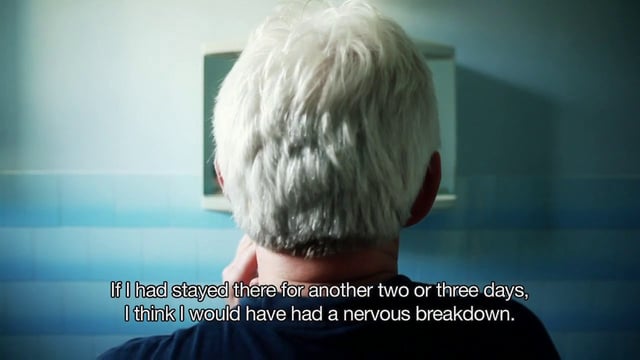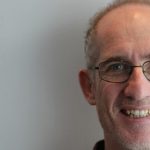
This is the sixth and final installment of our series on Post-Traumatic Stress Disorder (PTSD) and the visual arts.
This is the sixth and final installment of our series on Post-Traumatic Stress Disorder (PTSD) and the visual arts. You can start from the beginning of the series here.
Halting genocide and mass violence is very difficult. It is more effective to focus on early prevention: responding to difficult life conditions, developing positive attitudes and constructive ideologies that humanize the “other.” – Ervin Staub (2012)
“Ordinary Heroes” is a documentary series produced by the Sarajevo-based Post-Conflict Research Center (PCRC) in association with Pinch Media. To date, the series contains four 30-minute episodes, each one telling a story of ordinary Bosnian citizens (Serb, Croat, Jewish or Bosniak alike) who, amidst the horrors of war, chose to risk their own lives to save the lives of others. These individuals are the “living rescuers” of Bosnia-Herzegovina. The project is ongoing, with PCRC actively encouraging young Bosnians to discover more tales of bravery and human compassion within their communities. These stories need to be told not only for their historical legacies but also because of their power as tools through which to foster post-traumatic growth (PTG) out of the chaos and carnage that was the Bosnian War. So, while the content of the documentaries is fascinating, what is equally interesting is how the documentaries are being used.
Since 2014, PCRC has been using “Ordinary Heroes” as an integral part of their “Heroes in Training” youth workshops held throughout Bosnia. Based on the work of the well-known psychologist Ervin Staub, the workshops are designed to teach and nurture moral courage among Bosnian youth by highlighting and exploring the social influences that can lead to war and mass violence. Across a lifetime of work, Staub labeled some of these psychological processes as inter-ethnic rivalry, demonizing the “other” and the “bystander effect.” PCRC uses tales of PTG to counter some of these social dynamics and foster moral courage among the workshop participants.
In this short video Velma Šarić, Founder and President of PCRC, explains the structure of the youth workshops, their use of multimedia and how the documentary series “Ordinary Heroes” is incorporated into the discussions. You meet Agata “Strawberry” Čolić – one of the inspiring “living rescuers” profiled in “Ordinary Heroes.” You also briefly see Hamdija- the man she rescued.
To date, PCRC has held over 30 “Heroes in Training” workshops across Bosnia, with over 1000 youth participants. Highlighting tales of moral courage and PTG, these workshops send a clear message that “history” does not mean “destiny.” PTSD is rife in Bosnian youth. “Ordinary Heroes” and the associated workshops allow Bosnian youth to internalize the post-traumatic growth of their elders, claim it as their own and see themselves as significant agents of change for the future. As Krippner, Pitchford and Davies (2012) so beautifully remind us, it is not the event which caused the PTSD that is crucial; “it is the way that one interprets the event that can lead to strength or weakness, to growth or to frailty” (p. 142). Post-traumatic stress and intergenerational trauma are not life sentences. Bosnia and its people can heal and move on from the war.
Conclusion: questions of interpretation.
This series began with the question “What role do the visual arts play in public health?” Over the past few weeks, we have explored the public health issue of PTSD and its implications for intergenerational trauma and post-traumatic growth. We have investigated a number of different works including sculpture, documentary films and mixed media presentation. What I hope to have communicated is how these various creative approaches and mediums offer an interpretative framework for the health issues concerned. Whether the aim is to “lay bare” the public memory of genocide (“One Million Bones”), or to question who exactly are the victims of war (“Uspomene 677”), art helps to put the idea of “public” back into concepts such as PTSD, intergenerational trauma and, indeed, public health itself. At a time when there is an increasing tendency to individualize health problems such as PTSD and blame individuals for their suffering, the visual arts can remind us that all health issues, particularly those that result from war, are truly social problems.
Further Reading
Krippner S, Pitchford D B, Davies J. (2012) Post-Traumatic Stress Disorder. Santa Barbara, California: Greenwood.
Staub, E. (2012) the roots and prevention of genocide and related mass violence, Zygon: Journal Of Religion & Science, 47 (4): 821-842.






